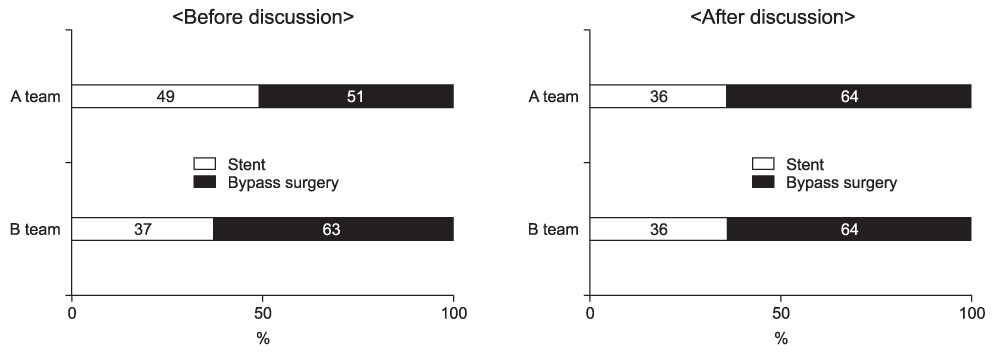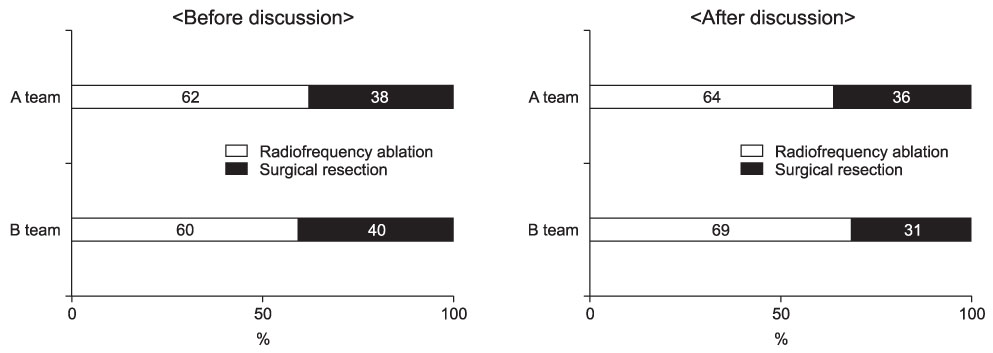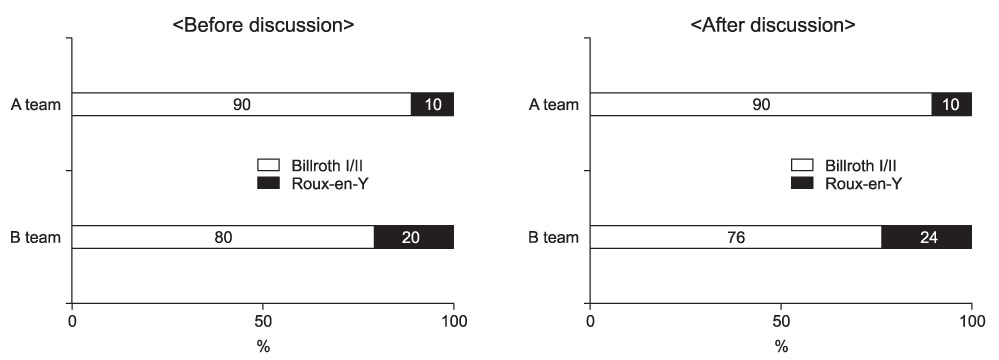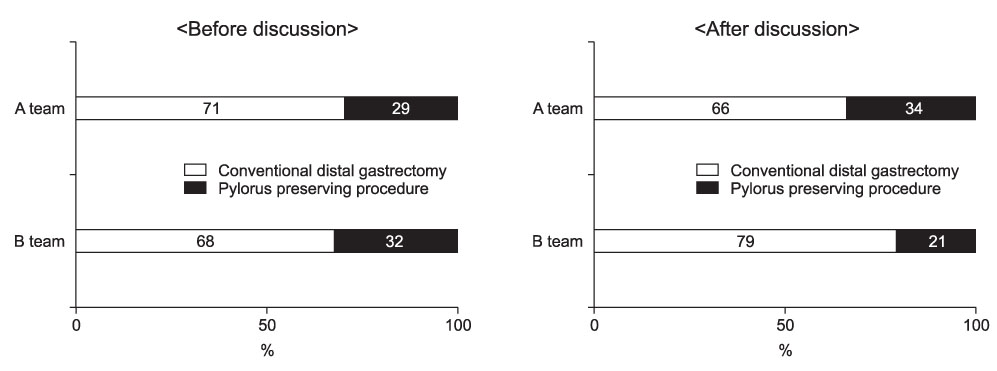J Gastric Cancer.
2010 Sep;10(3):141-148.
A Report on "Debates on the Strategy for Treating Gastric Cancer" at the Congress of the Korean Gastric Cancer Association
- Affiliations
-
- 1Department of Surgery, The Catholic University of Korea, Seoul, Korea. chpark@catholic.ac.kr
- 2Department of Pathology, Sungkyunkwan University, Seoul, Korea.
- 3Department of Gastroenterology, Choongang University, Seoul, Korea.
- 4Department of Surgery, Seoul National University, Seoul, Korea.
- 5Department of Pathology, The Catholic University of Korea, Seoul, Korea.
- 6Department of Internal Medicine, Korea University, Seoul, Korea.
- 7Department of Surgery, Soonchunhyang University, Cheonan, Korea.
- 8Department of Oncology, Yonsei University, Seoul, Korea.
- 9Department of Oncology, Ulsan University, Seoul, Korea.
- 10Department of Surgery, Ajou University, Suwon, Korea.
- 11Department of Surgery, Yonsei University, Seoul, Korea.
- 12Department of Surgery, Chonnam National University, Gwangju, Korea.
- 13Department of Surgery, Ulsan University, Seoul, Korea.
- 14Department of Gastroenterology, Yonsei University, Seoul, Korea.
- 15Department of Surgery, Jeju National University, Jeju, Korea.
- 16Department of Surgery, Inje University, Busan, Korea.
- 17Department of Surgery, National Cancer Center, Goyang, Korea.
- 18Department of Surgery, Kosin University, Busan, Korea.
- 19Department of Surgery, Dong-A University, Busan, Korea.
Abstract
- We have always attempted to create a standard treatment protocol for patients with gastric cancer. However, many debates still exist regarding gastric cancer treatment. For the past 2 years, at the Annual Congress of the Korean Gastric Cancer Association, we have presented a grand symposium on the "Debates on the strategy for treating gastric cancer". In 2008, four major topics were discussed and voted on after discussion. The four major topics were proximal location treatment for early gastric cancer, management choices for pyloric obstruction with advanced gastric cancer, management of liver metastasis, and reconstruction methods after a distal gastrectomy. The opinions of the audience for six minor topics were expressed by an electronic voting system. In 2009, the four main topics were treatment for submucosal tumor sized around 2 cm, laparoscopic gastrectomy in T2N1 gastric cancer, choices for managing gastric lymphoma, and application of a pylorus preserving procedure for early gastric cancer at the antrum. The opinions of the audience for these six minor topics were expressed by an electronic voting system, as was conducted in 2008. It was good opportunity to identify a point of contact about the debates on managing gastric cancer. The results of these debates and studies will identify the best methods to treat patients with gastric cancer.
Keyword
MeSH Terms
Figure
Reference
-
1. Ministry for Heath Welfare and Family Affairs. Annual report of cancer incidence (2005) and survival (1993-2005) in Korea. 2008. Seoul: Ministry for Heath Welfare and Family Affairs.2. Song KY, Kim SN, Park CH. Critical pathway for operable gastric cancer. J Korean Gastric Cancer Assoc. 2005. 5:95–100.
Article3. Noh SH, Lee JI. Gastric cancer practice guideline. J Korean Gastric Cancer Assoc. 2004. 4:286–293.4. The Information Committee of the Korean Gastric Cancer Association. 2005-2006 nationwide gastric submucosal tumor report in Korea. J Korean Gastric Cancer Assoc. 2008. 8:104–109.5. Yang HK. Information Committee of the Korean Gastric Cancer Association. Current status of clinical practice for gastric cancer patients in korea: a nationwide survey. J Korean Gastric Cancer Assoc. 2004. 4:95–108.
Article6. Kim HH, Kim KH, Kim DH, Kim C, Kim BS, Kim YW, et al. Nationwide survey of laparoscopic gastric surgery in Korea, 2004. J Korean Gastric Cancer Assoc. 2005. 5:295–303.
Article7. Ishikawa M, Kitayama J, Kaizaki S, Nakayama H, Ishigami H, Fujii S, et al. Prospective randomized trial comparing Billroth I and Roux-en-Y procedures after distal gastrectomy for gastric carcinoma. World J Surg. 2005. 29:1415–1420.
Article8. Lee J, Kim W. Long-term outcomes after laparoscopy-assisted gastrectomy for advanced gastric cancer: analysis of consecutive 106 experiences. J Surg Oncol. 2009. 100:693–698.
Article
- Full Text Links
- Actions
-
Cited
- CITED
-
- Close
- Share
- Similar articles
-
- Corrigendum: Korean Gastric Cancer Association Nationwide Survey on Gastric Cancer in 2014
- Screening of gastric cancer
- The Metformin Use and Gastric Cancer Risk
- Surgical Outcomes of Patients Undergoing Gastrectomy for Gastric Cancer: Does the Age Matter?
- The Meeting Report of the Information Committee Workshop of the Korean Gastric Cancer Association









